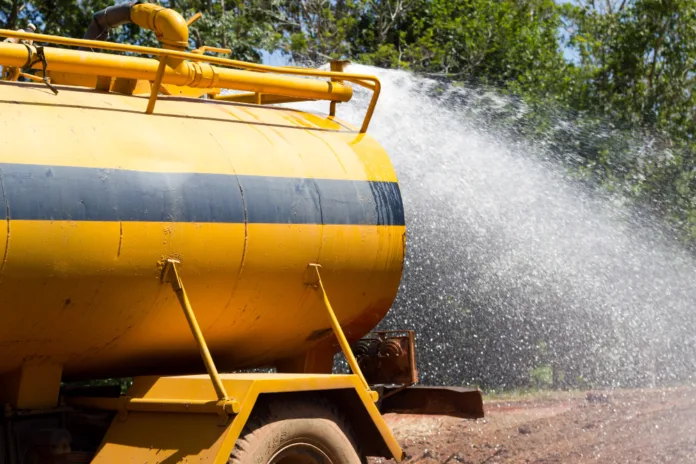Dust generation is a common issue in construction and demolition activities, resulting from processes like excavation, material handling, and debris clearance. These fine particles, often laden with harmful substances like silica, can adversely affect air quality, cause respiratory health problems, and disrupt nearby environments. Dust suppression is an effective solution to address this challenge by controlling and reducing the release of airborne particles at the source.
What is Dust Suppression?
Dust suppression is the process of controlling and reducing the release of dust particles generated during activities like construction, demolition, mining, and material handling. It helps maintain air quality, protects worker health, and reduces environmental impact by preventing airborne dust from spreading.
How does the dust suppression method work?
A dust suppression system works by reducing or preventing the spread of dust particles generated during activities like construction, demolition, and mining. Here’s how it functions:
1. Detection of Dust Source
2. Application of Suppression Methods as per Project Requirement
3. Dust Capture and Settling
4. Post-Suppression Handling
Advantages of dust suppression:
- Improves air quality around the site.
- Protects workers from respiratory issues.
- Ensures compliance with environmental and safety regulations.
- Prevents dust from impairing visibility, ensuring safer work conditions.
- Reduces risk of accidents and injuries caused by dust-related hazards.
- Protects local ecosystems by preventing dust spread.
- Reduces cleaning and maintenance costs for equipment and vehicles.
- Boosts worker efficiency by reducing health risks and discomfort.
- Helps meet health standards and reduces health-related claims.
- Enhances relations with nearby communities by limiting dust exposure.
- Prevents dust buildup, which can damage machinery and equipment.
- Keeps the site cleaner, reducing dust accumulation on surfaces and materials.
Different types of dust suppression methods:
- Water Spraying: Water is applied to dust-producing surfaces or activities, helping to moisten and settle dust particles quickly.
- Misting Systems: Fine mist or water droplets are released into the air to capture and weigh down dust particles, causing them to fall to the ground.
- Chemical Suppressants: Specialized dust control chemicals are used to bind dust particles together, preventing them from becoming airborne.
- Foam-Based Systems: A layer of foam is spread across dust-generating areas, encapsulating dust particles and reducing their dispersion into the air.
- Dust Barriers and Screens: Physical barriers, such as netting or fencing, are installed around dust sources to contain or direct the dust away from sensitive areas.
- Vacuum Systems: Suction systems are used to capture dust particles directly at their source, ideal for tasks like demolition or cutting.
- Spray Bar Systems: Fixed nozzles or spray bars along conveyor belts, stockpiles, or material handling equipment help apply water or chemicals to reduce dust at the source.
- Dust Collection Bags: Portable dust collection units with filtration bags capture and contain fine dust particles, especially in areas like workshops or processing plants.
Types of Dust Suppression Equipments and Systems
Water Trucks
Water trucks are commonly used to control dust over large areas, such as roads, construction sites, and mining operations. These trucks are equipped with large tanks of water, which are sprayed over dusty surfaces to prevent particles from becoming airborne. The mobility of water trucks allows them to be moved around a site to address multiple dust sources. They are especially effective for controlling dust on unpaved roads or large work zones where activities like material transport and earthmoving are ongoing. The ability to adjust spray nozzles for fine mist or heavier water streams makes them adaptable to different dust levels.
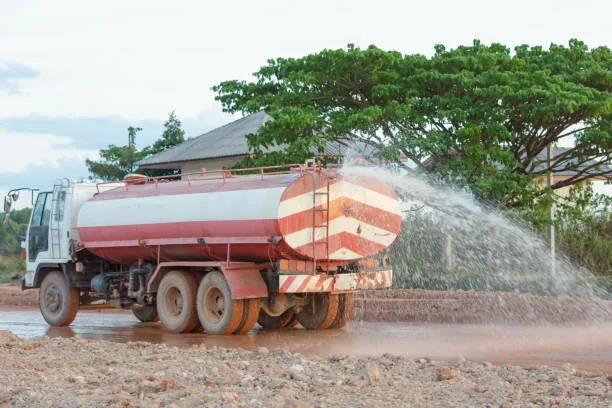
Dust Control Sprayers
Dust control sprayers are versatile equipment used to target localized dust sources. These sprayers are typically mounted on vehicles or used as standalone units, featuring adjustable nozzles that allow operators to control the volume and direction of water or dust control chemicals. They are particularly useful for areas with concentrated dust generation, such as material handling zones, demolition sites, or unpaved roads. The key advantage of dust control sprayers is their precision, making them ideal for controlling dust in smaller, confined areas or places where large-scale suppression methods are impractical.
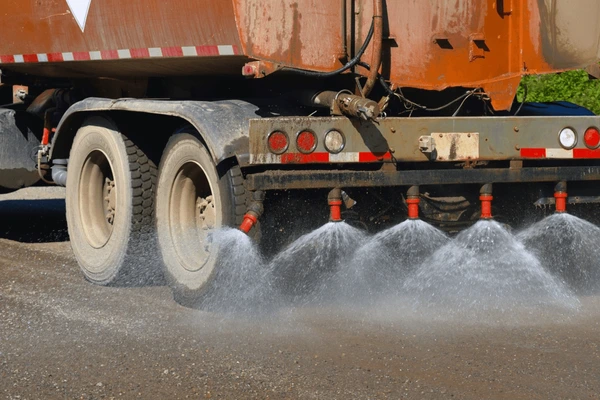
Fogging Machines
Fogging machines are designed to disperse a fine mist or fog into the air, which helps capture small dust particles and forces them to settle on the ground. These machines are highly effective in controlling fine dust that would otherwise remain airborne for longer periods. Fogging machines are commonly used in environments like construction sites, warehouses, and mining operations, where fine particles are generated during activities like cutting, grinding, or loading. The ability to create a dense, uniform mist allows fogging machines to manage dust in both open and confined spaces, reducing the impact of airborne dust on workers and the surrounding environment.
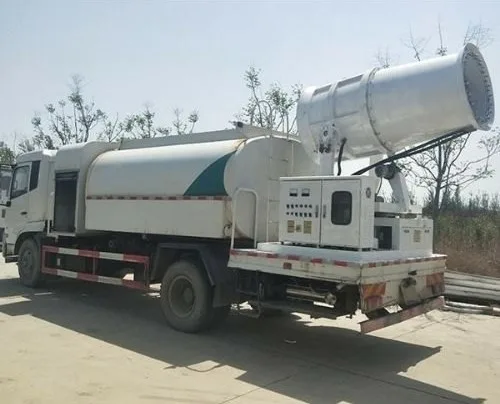
Mobile Dust Suppression Units
Mobile dust suppression units are portable systems that can be easily moved across a worksite to provide flexible dust control wherever needed. These units are typically mounted on trailers or vehicles and are equipped with water tanks and spray systems. Their portability makes them ideal for dynamic sites where dust is generated in multiple areas at different times. Mobile units are particularly beneficial for projects that involve frequent changes in the layout or movement of materials. By providing on-the-spot dust control, they help maintain a safer and cleaner work environment, especially in large-scale operations like construction, demolition, and mining.
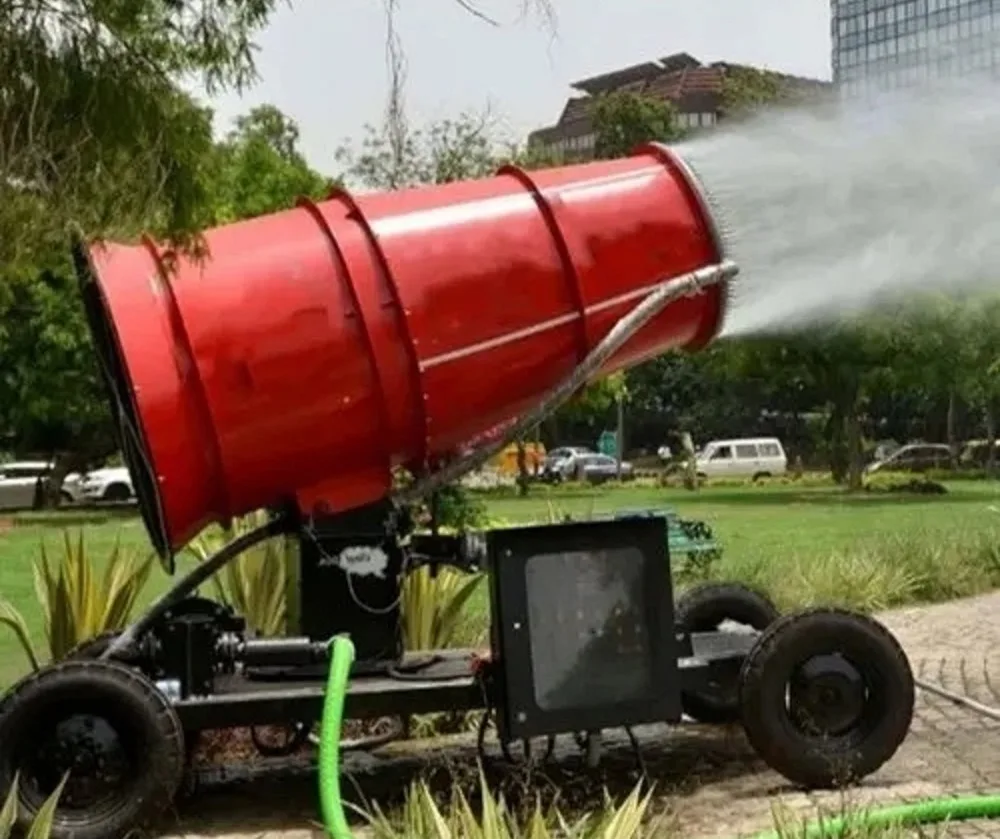
Dust Collectors
Dust collectors are used to capture airborne dust particles directly at the source using various filtration techniques. These systems use suction and filtration technologies like HEPA filters, cyclonic separators, or baghouse systems to trap dust particles before they can spread into the air. Dust collectors are typically used in manufacturing facilities, demolition sites, and mining operations where dust levels are high and pose health risks. The main advantage of dust collectors is their ability to keep indoor air clean and reduce the risk of respiratory problems among workers. These systems help businesses comply with workplace safety standards and environmental regulations by preventing dust from becoming a hazard.
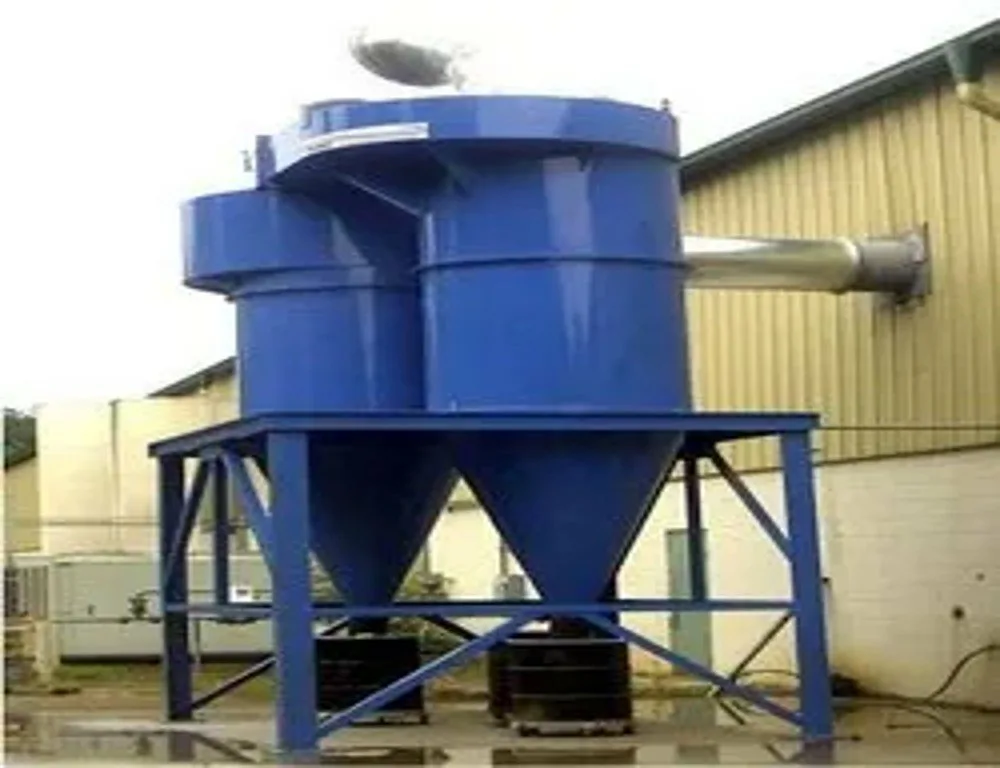
Water Cannons
Water cannons are high-powered systems that use pressurized jets of water to cover large areas and suppress dust. These systems are capable of spraying water or dust control agents over long distances, making them ideal for large-scale operations like mining, construction, or demolition sites. Water cannons are highly effective for managing extensive dust generation, such as during earth-moving activities, blasting, or material handling. They can be positioned at strategic points to ensure comprehensive coverage across a site. The ability to adjust the spray intensity and direction gives operators control over how the dust is suppressed, allowing for flexibility in managing varying dust levels throughout the day.
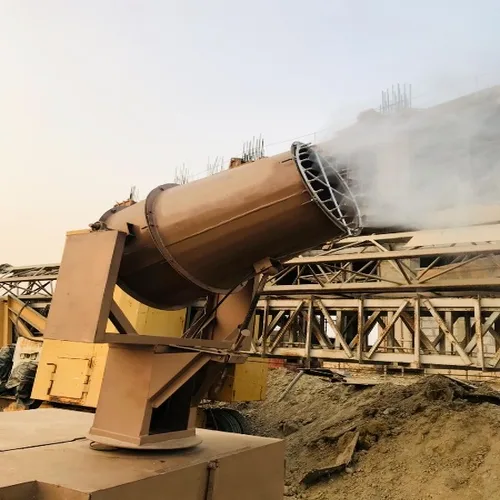
Conclusion
Dust suppression is essential in construction and demolition to protect health, improve air quality, and ensure regulatory compliance. It helps to create safer work environments and reduces environmental impact, contributing to more sustainable projects.


